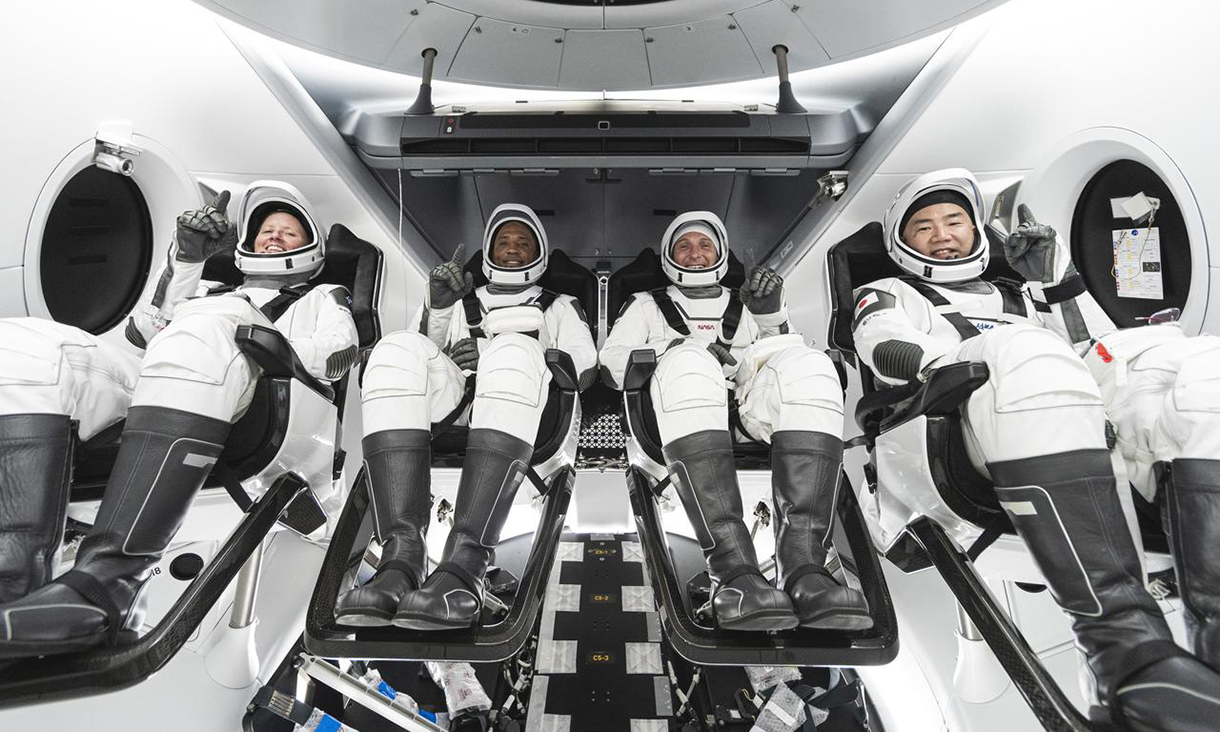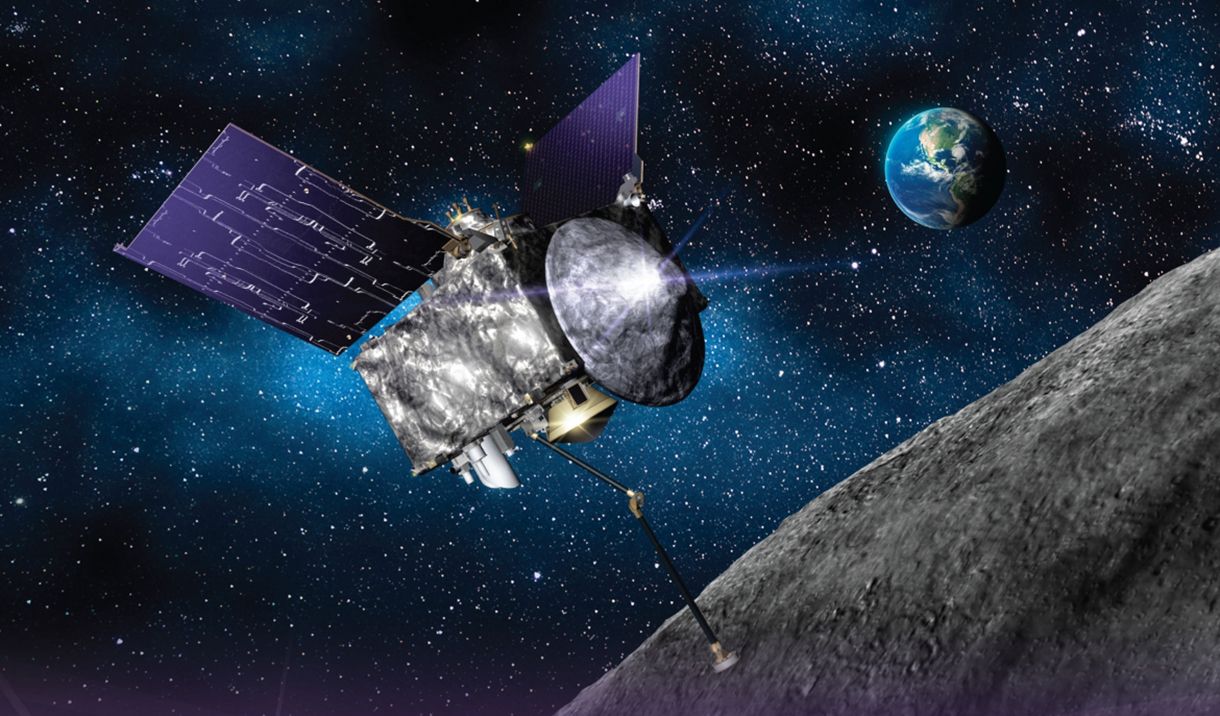Swinburne astronomers review space news highlights of 2020

This year saw the first crewed flight of the new SpaceX Dragon to the International Space Station. Credit: NASA/SpaceX.
In summary
- Dr Rebecca Allen and PhD candidate Sara Webb from Swinburne’s Centre for Astrophysics and Supercomputing have compiled a list of the best in space news from 2020
2020 has proven to be a very difficult year, but the world pulled together and made some incredible advances in space.
This year marked some major milestones for space agencies across the world and saw the foundations laid for the next era of space exploration.
SpaceX Dragon and the Commercial Crew Program
NASA will no longer have to depend on the Russian Soyuz capsule to ferry astronauts to and from the International Space Station (ISS). This year saw the testing of the new SpaceX Dragon crew capsule and first flight with a crew of four US astronauts: Michael Hopkins, Victor Glover and Shannon Walker along with Japanese astronaut Soichi Noguchi. The Crew-1 event was the first in the new series of flights, replacing the Expedition program that marked 20 years of continuous human presence aboard the ISS with its 64th mission earlier this year.

Credit: NASA
Osiris Rex and Hayabusa
They may be some of the smallest objects in our solar system but to future space missions, asteroids are a big deal. The minerals they contain are worth trillions and their pristine condition can reveal new insights into our early solar system, helping us understand important questions like how Earth got its water. But we are limited by what we can learn from sending robotic space craft to asteroids. To learn more we have to dig deep and analyse samples back on Earth. This year saw incredible feats as NASA’s Osiris Rex Mission was able to scoop up a healthy portion of asteroid Bennu, while JAXAs Hayabusa 2 landed in Australia and its payload from asteroid Ryugu is enroute back to Japan.
Life in Space
Nothing gets us excited like the possibility of finding life out there in the Universe, and 2020 was a year of amazing discoveries that could hint to life hiding in our very own solar system.

Credit: NASA
Water on the Moon!
You won’t find oceans or lakes on the dusty surface of our Moon, but if you looked closely at the lunar surface you’d likely find H2O molecules in the soil. These results come from NASA’s Stratospheric Observatory for Infrared Astronomy or SOFIA for short. When you think of an observatory you might picture a telescope high up on a mountain somewhere. However, SOFIA isn’t like other observatories; it is contained fully within a Boeing 747! Our atmosphere blocks the majority of infrared light, so to solve this SOFIA flies at ~40,000 feet, above 99 percent of the infrared blocking atmosphere. Although SOFIA has detected water on the lunar surface, it is still 100 times less then you’d find in the Sahara Desert. More observations with SOFIA are planned for the future, and with them will come a better understanding of the concentrations across the lunar surface.
Life in the atmosphere of Venus?
Could microbes be hiding the dense clouds of Venus? Researchers using two different radio telescopes believe they have detected traces of an element called phosphine. Why phosphine might hint at life takes us back down to Earth, and how we observe phosphine here. On Earth very small concentrations of phosphine are present in our atmosphere, most likely from decaying organic matter. Phosphine is also produced as a byproduct of anaerobic organisms – organisms that do not require oxygen. Using these cues from Earth we can speculate that the presence of Phosphine could indicate the presence of organic life. However before we get too excited, it’s important to note that this research has been questioned by other teams’ analysis of past data. So we’ll be watching this space very closely in the coming years for further results.

An artist’s impression of the SGR 1935+2154 magnetar in outburst, showing complex magnetic field structure and beamed emission. Image credit: McGill University Graphic Design Team.
Wild Astronomy
The Universe is a mysterious and sometimes wild environment. Results released this year outlined the discovery of gravitational waves produced from a massive black hole collision seven billion years ago. The gravitational wave, a ripple traveling through both space and time, was detected by the Laser Interferometer Gravitational-wave Observatory (LIGO) detectors in May 2019. The results, only recently published, describe the merger of two black holes into one ultimately producing a singular black hole weighing 142 times the mass of our Sun. In the collision, mass equal to nine Suns was converted into the energy that rippled space-time, leading to its detection.

Astronomer spotlight
The Nobel Prize in Physics was awarded to three astrophysicists this year – Roger Penrose, Reinhard Genzel and Andrea Ghez – for their work in understanding black hole formation and the discovery of the supermassive black hole at the centre of our galaxy.
Notably, Andrea Ghez is only the fourth woman to be awarded the Nobel Prize in physics and, currently, there are twice as many prizes awarded to men named John than women as a whole. This acknowledgement of the incredible work by Ghez is a great step forward in recognising the vast contribution to the physical sciences by women worldwide!
-
Media Enquiries
Related articles
-

- Astronomy
High school students work with Swinburne astronomers on the future of space
Swinburne’s Youth Space Innovation Challenge has inspired over 330 Australian teenagers to pursue a career in STEM.
Friday 26 July 2024 -

- Astronomy
- Science
Swinburne appoints new Director of Innovative Planet Research Institute
Leading geodesy expert, Professor Allison Kealy, has been appointed as the inaugural Director of Swinburne University's Innovative Planet Research Institute.
Monday 22 April 2024 -

- Astronomy
- University
OzGrav 2.0: A ‘new era of astrophysics’ launched at Swinburne
The next phase in the world-leading ARC Centre of Excellence for Gravitational Wave Discovery, dubbed 'OzGrav 2.0', launched this week at Swinburne University of Technology.
Wednesday 17 April 2024 -

- Design
- Astronomy
- Technology
- University
Swinburne ‘Rock Muncher’ takes part in Australian Rover Challenge
A multidisciplinary student team from Swinburne University of Technology competed in the 2024 Australian Rover Challenge held in Adelaide, South Australia.
Thursday 11 April 2024 -
.jpeg/_jcr_content/renditions/cq5dam.web.256.144.jpeg)
- Astronomy
New JWST observations reveal black holes rapidly shut off star formation in massive galaxies
New research showcases new observations from the James Webb Space Telescope that suggest black holes rapidly shut off star-formation in massive galaxies by explosively removing large amounts of gas...
Tuesday 23 April 2024

